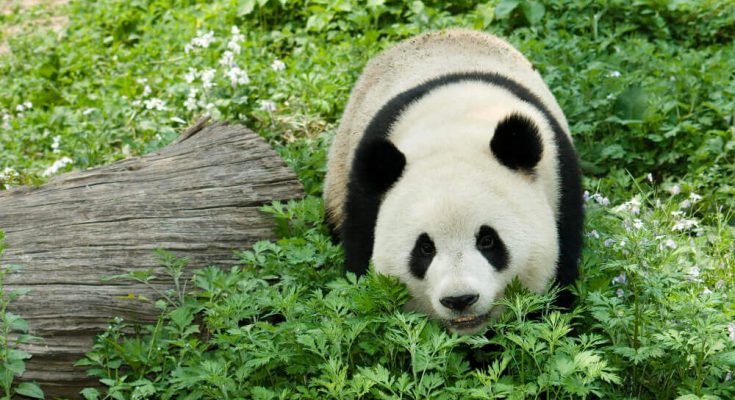The panda is a fascinating mammal that can be found in China. They are well-known for their black and white coloring, and they are the national symbol of China. Panda populations are declining, so it is important to learn about these animals and do what we can to protect them. In this blog post, we will discuss the physical characteristics of pandas, their diet and behavior, and the threats they face. We hope you will enjoy learning about these amazing creatures!
Physical Characteristics of Panda
The giant panda is a bear that is native to China. They are easily recognized by their large, distinctive black patches around their eyes, over their ears, and across their round body. Adult giant pandas typically grow to be about 4 to 5 feet tall and 6 to 8 feet long, with males slightly larger than females, on average. They can weigh anywhere from 220 to 350 pounds, but most adult giant pandas weigh between 250 and 280 pounds. The giant panda has a short tail, measuring only about 4 to 6 inches long. Their furry coat is thick and wooly and helps keep them warm in the cool mountainous regions where they live. The giant panda’s diet consists mostly of bamboo, which they eat almost exclusively. They have an extra humplike digit on each paw that helps them grip the bamboo stalks as they eat. Giant pandas typically live 20 years in the wild and up to 30 years in captivity.
Behaviors of Panda
As any fan of panda knows, these creatures are generally gentle and shy. They are good climbers and swimmers, and they use these skills to escape predators like wolves and leopards. Panda cubs are especially vulnerable, so mothers must protect them fiercely. When a panda feels threatened, it may become aggressive in order to protect itself or its young. In the wild, this can be a matter of life or death. However, in captivity, pandas are usually well-protected from predators. As a result, they typically only become aggressive when they feel overcrowded or stressed. Still, given their large size and powerful muscles, aggressive pandas can be dangerous animals. Fortunately, there are many steps that people can take to avoid provoking them.
Threats Panda Face
In the wild, pandas face many threats. They are hunted by humans, who often kill them for their fur. They also compete with other animals, such as tigers and lions, for food and space. In addition, they are at risk of becoming extinct due to habitat loss. As a result of these threats, it is estimated that there are only around 1,600 pandas left in the wild. While this may seem like a lot, it is actually very few when compared to other animals. For example, there are more than 20,000 tigers living in the wild. This means that pandas are one of the most endangered animals in the world. As a result of their endangered status, conservation efforts are underway to help protect pandas and their habitat. However, without greater understanding and awareness of the threats they face, it is unlikely that pandas will be able to survive in the wild for much longer.
Final Thought
The panda is a fascinating creature that is in danger of becoming extinct. In this blog post, we have discussed the physical characteristics of pandas, their diet and behavior, and the threats they face. We hope that you have enjoyed learning about these amazing animals! If you would like to learn more about pandas or other endangered animals, there are many resources available online and at your local library. With greater understanding and awareness of the threats they face, we can all do our part to help protect these creatures for future generations to enjoy. Thank you for reading!
This article is posted on Local Topic MY.




